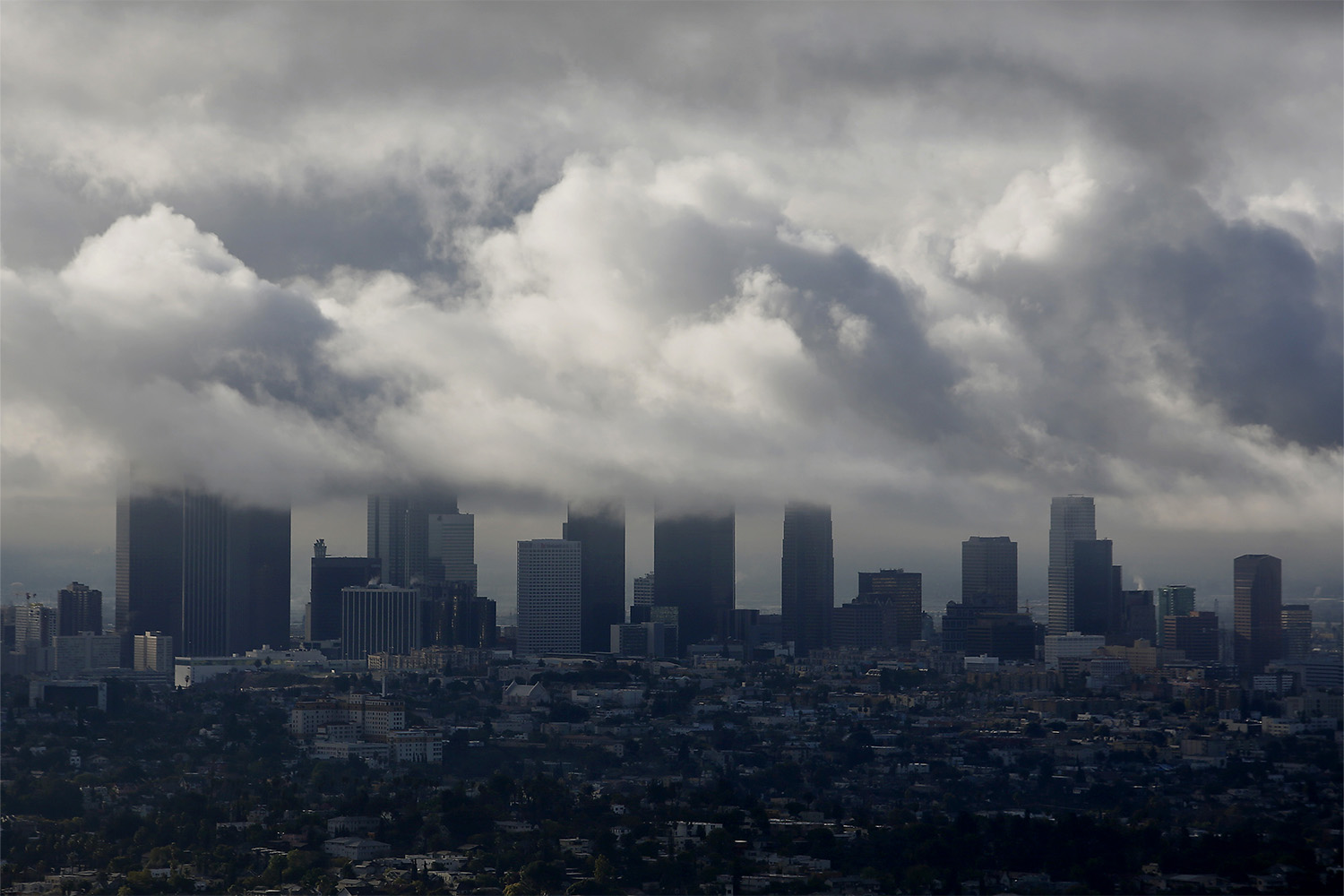As a native Oregonian, I grew up with grey skies and rainy weeks (well, months). But for most Angelenos, a couple of days in a row of precipitation is a disorienting, plan-canceling, unsettling circumstance. And in 2023 so far, we’ve had more rain spells than many L.A. residents have seen in years. In order to get a better understanding of why it’s been raining (and snowing!) so much in California lately, we called up the National Weather Service to get some answers.
Meteorologist David Sweet, who forecasts out of the Los Angeles/Oxnard office, answered some of our most pressing questions. One of the main takeaways? No, it’s not all in your head — the amount of rainfall we’ve had so far this year is 200% higher than the average year. Atmospheric rivers from the southwest and cold air from up by the Arctic Circle have been convening in California since December. Check out some more of his insights below.
InsideHook: From a scientific perspective, can you explain why it’s been raining so much in California this year?
David Sweet: Basically, one of two wet patterns has been hanging around all winter long. [First,] atmospheric rivers are long plumes of moisture that come up from the southwest near Hawaii, which bring the rich, tropical moisture into a coastal storm and cause very heavy rainfall. Or we were looking at a weather pattern [in which] storms are dropping straight out of Canada, almost near the Arctic Circle, bringing in very, very cold air to the region and causing a lot of snow in the mountains. So whether it’s these atmospheric rivers, which are the plumes of moisture from the southwest, or a strong storm coming out of the north, with a lot of cold air and a lot of snow in the mountains — that’s basically been happening ever since December.
A Historically Snowy Winter Means You Can Ski California on the Fourth of July
Who says the season has to end?I keep hearing this term “atmospheric river” — can you break down what that means a little further in layman’s terms?
Atmospheric rivers have been occurring in California probably throughout its history. The thing that’s a little bit remarkable about this here is we’ve had about 11 or 12 of them. We normally don’t get this many. And perhaps the reason is that the pattern has not really changed too much — we’ve had a very static, consistent pattern that’s very favorable for atmospheric rivers.
Is this related to global warming at all?
Well, that’s something that a climatologist would probably look into. Here at the Weather Service, we’re mostly short-term forecasters, and we’re forecasting weather events as they occur or trying to predict them about seven days out. A climatologist can look back over several decades, or even centuries, at weather records and better answer that question. So that’s part of the continuing confusion that exists between weather and climate. Those are two separate things — very different things.
Have you seen a winter with rainfall this heavy in your tenure? Is it really that unique, or have we just not seen a bad winter in a while?
Part of it is that we haven’t seen a bad winter in a while — we had an extended period of very dry weather, associated with a drought. I’d have to go back to something like 1997-98, that was a very active El Nino year, and we had a great deal of rainfall back then.
Can you share any specific measurements of rain and snowfall, and how they objectively show what we’ve all been feeling and experiencing with the weather?
I can certainly go to the records that we have here for downtown Los Angeles, one of our main climate stations, and give you an idea how far above normal we are. The water year starts October 1 and goes through September 30. Since October 1, downtown Los Angeles has received 26.09 inches of rain. The normal value through this date would be 12.75 inches. We’re basically 13.34 inches of rain above normal, around 200%.
What are some of the long-term impacts and effects of getting this much rainfall? Is it overall a good thing or a bad thing?
The drought situation is much improved. On the possible negative side, so much snow has fallen in the local mountains here in Southern California, as well as in the Sierra Nevada, that there could be some flooding issues in the main stem rivers. As we get warmer, all of that snow [will] start to melt. We’re at the point now where additional heavy rainfall would only produce more flooding and possible damage.
This article was featured in the InsideHook LA newsletter. Sign up now for more from the Southland.
